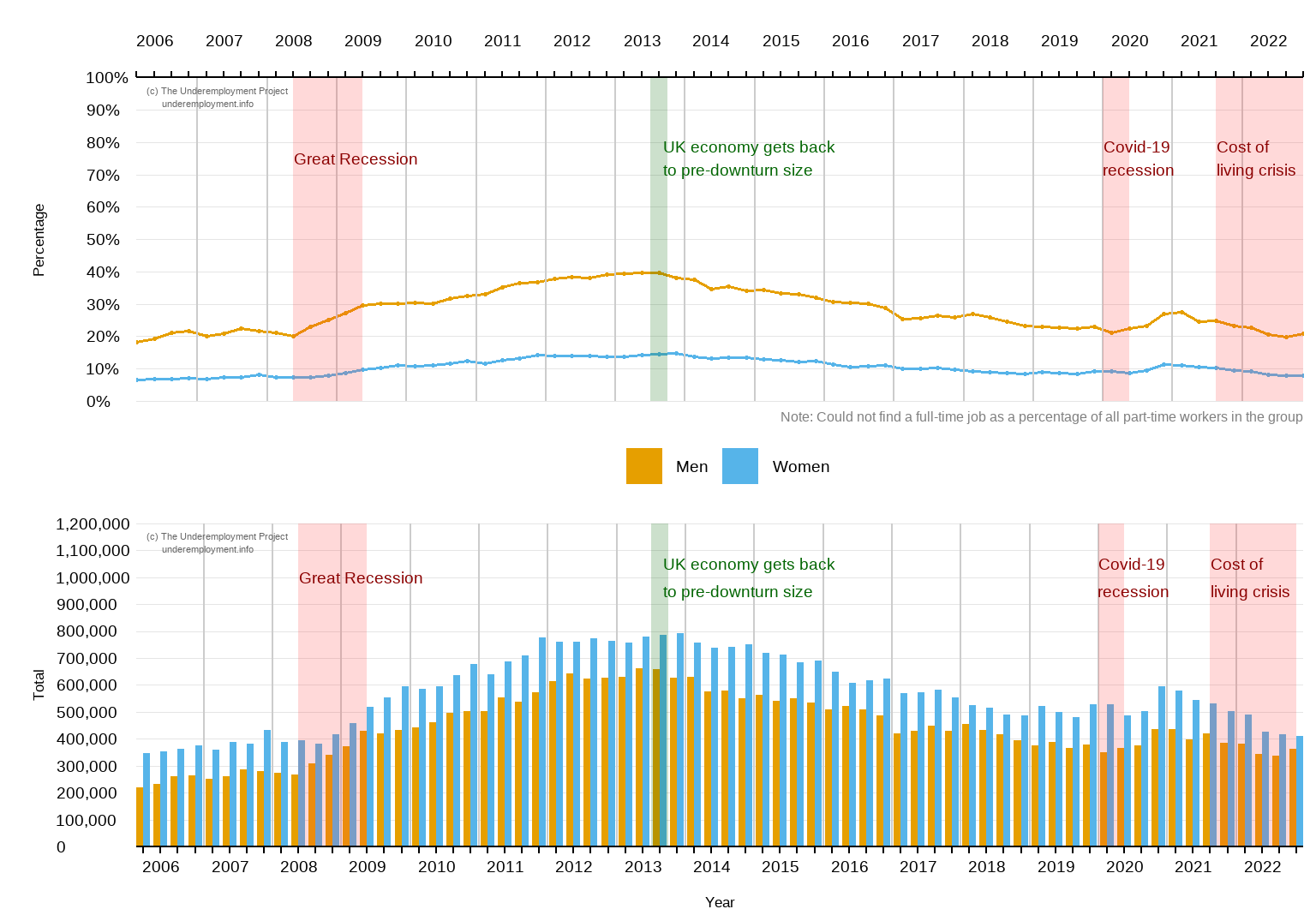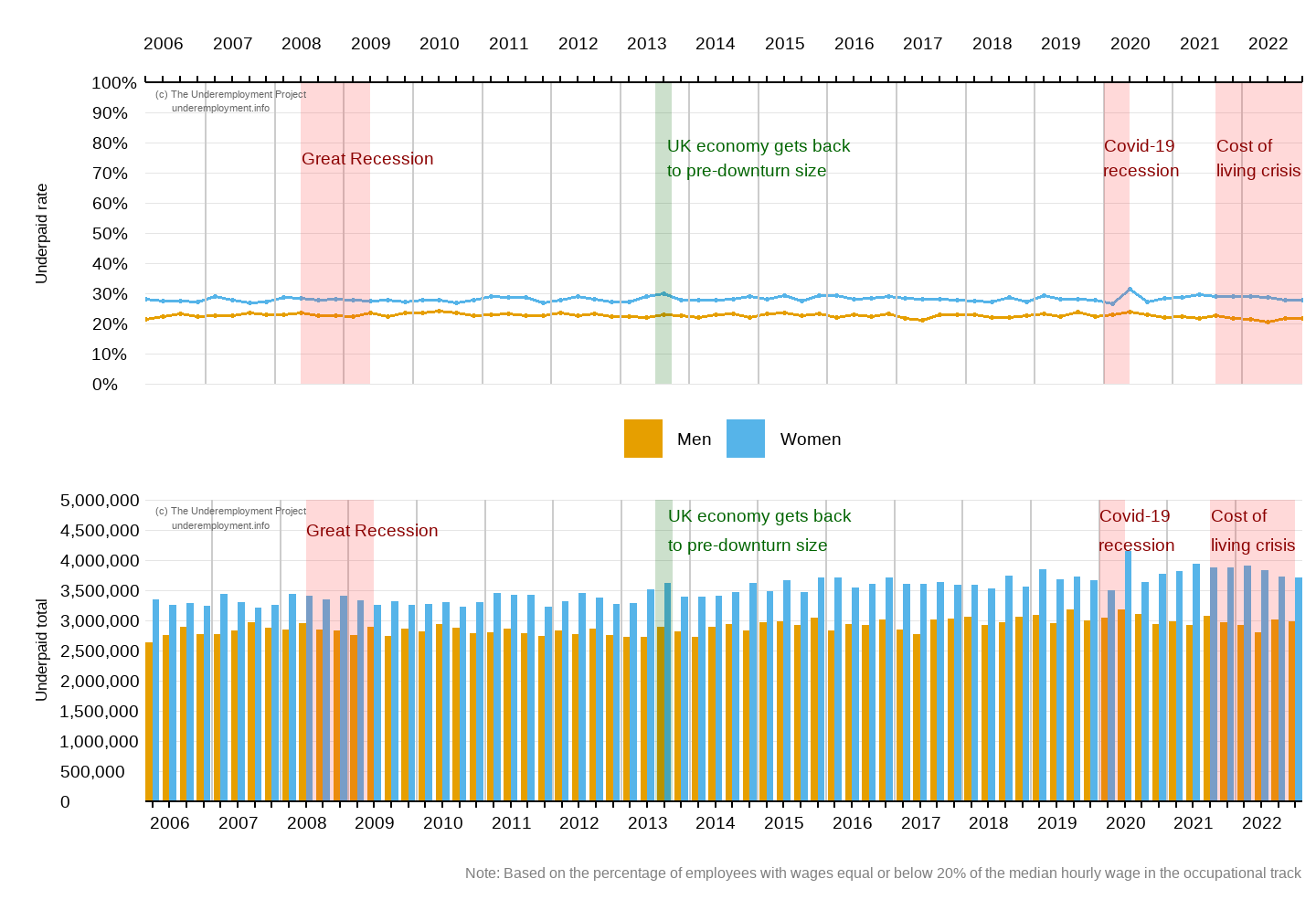- Have you ever been in a job where you wanted to work more hours?
- What about having a job where you felt overqualified?
- Or a job where you felt underpaid?
Most people will answer with a yes to at least one of these questions. However, more women in the UK will answer ‘yes’ to all these questions. This indicates that more employed women than men in the UK are experiencing underemployment in more than one dimension.
What is underemployment?
Underemployment is a complex notion. In our project we measure underemployment using our TWS (Time, Wages, Skills) approach that considers three elements:
- insufficient hours of employment (or Time-related underemployment)
- low wages (or Wage-related underemployment)
- limited use of skills at work (or Skills-related underemployment)
Why is underemployment important?
Being underemployed has serious negative ramifications for workers and their families. For example, when people can’t work enough hours to earn a decent income, they might not have enough money to cover their basic needs, especially when the cost of living is high.
But this is not just a short-term issue. Working fewer hours and earning less money also makes it hard to save money for unexpected expenses or for retirement. Underemployed workers also have fewer opportunities in their jobs for training and career development, and progression and promotion.
Who is underemployed in the UK today?
(i) Time-related underemployment
Time-related underemployment refers to individuals who work fewer hours than they desire. This includes individuals who are working part-time but would prefer full-time hours, any worker who wants longer hours in their current jobs or who would like a new job with longer hours.
As a group, working women are more likely than are men to say they want more hours. Being time-related underemployed means the women workers face higher levels of financial risk and constrained careers.
For example, there are many more women than men working part-time involuntarily, as Figure 1 shows. Women are more likely to struggle to find full-time jobs because underemployment is most common in the jobs that women are more likely to perform (e.g. in the public sector and in small organizations), and many full-time jobs are not compatible with care responsibilities. People with caring responsibilities, the majority of whom are women, face real constraints in how many hours they can work and what jobs they can take. When part-time jobs have been taken specifically to fit around caring roles, workers’ abilities to increase their hours, should they wish, are severely limited.

Figure 1: Part-time workers who could not find a full-time job
The percentage of part-timers unable to find full-time work is substantially higher for men. Ten per cent of female part-timers, and 20% of men, said they were working part-time due to a lack of full-time options. It might seem that most female part-timers prefer part-time work, while very few men do, even if they could choose their work hours freely. However, our work hours are not really a matter of personal choice. They depend on the availability of suitable job opportunities, including how many hours employers are willing to offer, and our own individual circumstances, for example, caring responsibilities and availability and affordability of childcare and other provision for carers.
(ii) Wage-related underemployment
The wage-underemployed are workers who are underpaid for what they do.
Women are more likely to be at risk of wage-related underemployment than are men. Figure 2 shows trends over time in wage-related underemployment. Each year, more women than men earned hourly wages far below the average for their occupation.

Figure 2: Employees with wages equal or below 20% of the median hourly wage in the occupational group.
(iii) Skills-related underemployment
The skills-related underemployed are workers who are working below their potential because the skills they have are greater than required in their current job.
Women also face more skills-underemployment than men and the gender gap in skills-related underemployment has widened in the UK over time.
Next steps?
Underemployed women are working below their potential. Having insufficient hours of paid work, being overqualified for a job or underpaid, or experiencing all three forms of underemployment at the same time, brings negative ramifications for affected workers and their families.
Our Underemployment Project is answering vital questions about how much underemployment there is in the UK, who is at risk and what is the lived experience of underemployment. See our recent findings and subscribe for updates here and follow us @ESRCUnderemploy
